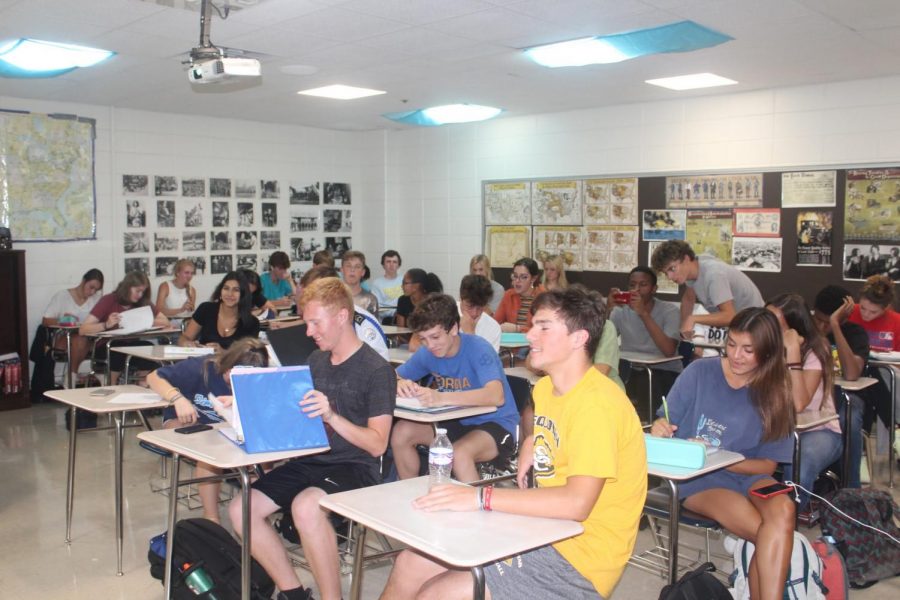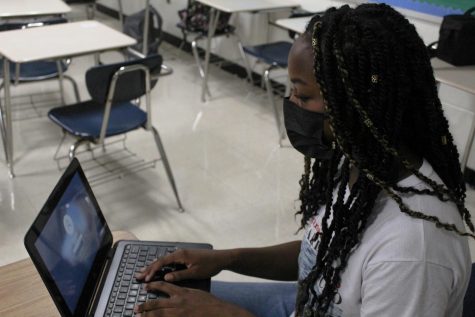The size of the student body prompts concern
Mr. Andy Maxwell’s sixth period US History class listens along during a lecture. Last year Mr. Maxwell’s largest class had fewer than 30 students, but this year almost all his classes have over 30 students. Photo by Emily Hill
Three hundred fresh faces have been added to the student body this school year. With this increase comes a few changes to the way things are run; class sizes see a particularly significant hit as more students are added to each classroom to accommodate the larger student body.
Sophomores Alison Eltz and Anna Powell have concerns about how larger class sizes may affect students’ learning, especially because their English class has 34 students.
“Teachers have less time per individual student to answer questions and address their needs,” Powell said. “With additional students in the classroom, there can be more distractions to interfere with student learning.”
Like Powell, Eltz believes that larger classrooms bring more distractions.
“If there are a lot of kids in a classroom, some might not get desks and [be unable] to focus,” Eltz said. “Also, more students per class equals more talking, which might make it hard for me or other students to listen.”
Social Studies teacher Mr. Paul Peacock has observed that making connections with students proves to be more challenging with larger classes.
“[Students] don’t feel like they can approach [teachers],” Peacock said. “It makes it more difficult for teachers to easily relate to the students one-on-one.”
Powell agrees with Peacock’s point of view.
“It is more difficult to gain rapport with a teacher when there are too many students,” Powell said. “It also makes activities more difficult to manage, and not all students participate.”
There is an additional consequence to having larger classrooms: the extra workload for teachers. Peacock can attest to the challenges that come with this workload.
“There’s a lot more planning [and] a lot more strategic things that have to be done in order to be sure that students are getting what they need for grading purposes [and] their learning purposes,” Peacock said.
Generally, all parties seem to prefer smaller class sizes. Eltz values the individual attention that smaller classes bring.
“[I prefer smaller classes because] the teachers are more focused on each individual and are able to help each student, which is not realistic in larger classes,” Eltz said.
Peacock likes the increased engagement with his students in smaller classes and the ease of planning activities for them.
“There’s less of the intimidation, or the idea that ‘[there’re] so many students here, [the teacher is] not going to notice me,’” Peacock said. “When you’re in a smaller class it’s much more conducive to do skills and activities because you can pace it more easily.”
With new faces come new challenges, and students and staff are preparing regardless to have the best year possible amidst them.






